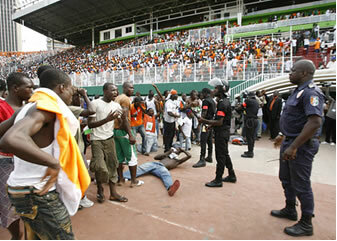South African handicraft is very diversified, as it presents a lot of cultural richness due to productions made from the region's own materials, extracted from nature. It is recognized worldwide for its beauty and unique style.
With a brightly colored flag and striking design, these are used and valued in articles handcrafted, such as jewelry, key chains, kitchen ornaments, vases, decorative objects, pots, etc.
The articles have originality, with geometric designs that characterize the colors of the country, but also with exquisite and exotic African geometric shapes.
Some projects are developed in the country in order to improve the quality of life of part of the needy population, increasing the source of income for families. Through them, craft traditions are passed from generation to generation, where children learn to making pouches and small baskets made from palm straw or cultural raw materials indigenous; which, when sold, allow these children to enter schools through the fruit of their own work. Some objects take about a month to be produced by little children's hands.
Women make bottles in the shape of lamps; bowls in the form of baskets, used to transport grain or as fruit bowls; tiny bowls used to store nuts, sweets, etc.; open bowls, decorated with pearls inside; patterned bowl sets; among others.
They use discarded materials such as telephone wires, using them to decorate salt and pepper shakers and candlesticks, giving them a very strong color.
With palm leaves, found abundantly in the region, they make lampshades, as they are very flexible and durable. The production of these pieces came about through a project that aims to reorient women who have artistic talent and who were left idle in rural areas. The project aims to strengthen the source of income for these people, through the sale of manufactured items.
Do not stop now... There's more after the advertising ;)
The range of items ranges from purses, bags and baskets to decorative objects such as chests of drawers, lampshades, trash cans, fruit bowls, umbrellas, among others, being used by decorators and sold to hotels, local inns or even to others countries.
With the development of this project, the quality of life of these women artisans has changed a lot, as they develop decent work capable of sustaining them.
Making handmade cards is also a source of income for local artisans. They are made with paper in different colors, featuring motifs with animals from the region: zebras, giraffes, leopards, elephants and rhinos, which are very characteristic of the country.
Christmas items are also produced, ornaments for Christmas trees made with stones and beads, angels, medallions, bells, sold in packages with several units. The cribs escape the traditional rules of the world, where the characters are black and the animals present are the zebra and the giraffe.
Another social project works on the production of angels, of all shapes and materials, such as: key chains, earrings, necklaces, statuettes and cards. The project supports education, where children and young people are oriented against crime, having the angels as a symbol of peace. Through work, skills are developed in order to make them able to support themselves, improve the quality of life and reduce crime.
In some villages, handicrafts are geared towards clothing, body adornments made with banana leaves and grass, more used to protect private parts. In addition to these, wooden spoons, picture frames, bags and wooden pens are made.
By Jussara de Barros
Graduated in Pedagogy

